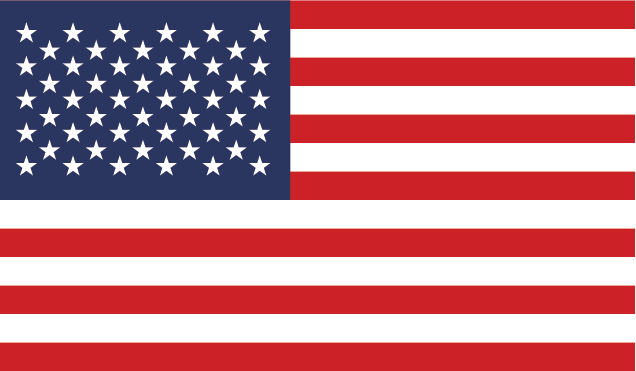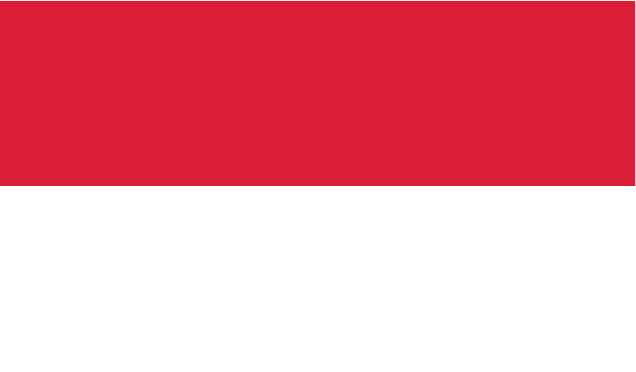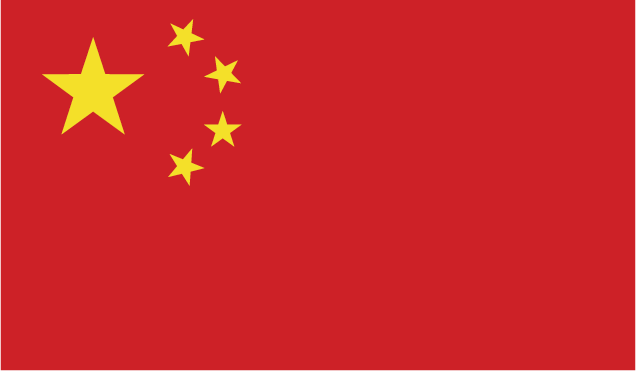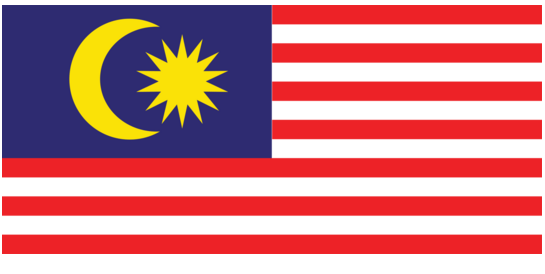Current Trends in K-Beauty Marketing: How Brands Are Engaging Indonesian Consumers
K-beauty marketing trends in Indonesia
K-Beauty: A Global Phenomenon Taking Indonesia by Storm
K-beauty, that is, Korean beauty, isn't just a trend; it's a global movement, and its impact in Indonesia is nothing short of remarkable. We're talking about a whole universe of skincare and cosmetic wonders hailing from South Korea, famed for their cutting-edge ingredients, next-level formulations, and those oh-so-meticulous skincare rituals.
The Worldwide Ascent of K-Beauty
Several factors have propelled K-beauty to international stardom. The "Korean Wave" or "Hallyu"—think K-pop, K-dramas—has undeniably played a key role, effortlessly spreading Korean beauty ideals and practices across the globe. And let's not forget the power of the internet and social media, those echo chambers that have amplified K-beauty's reach, enabling consumers to dive deep into Korean skincare routines and product must-haves2.
Indonesia's Love Affair with K-Beauty
Indonesia, with its bustling urban centers and a population north of 280 million, has truly embraced K-beauty. The urban middle class, making up a solid 20.5% of the population, is a driving force behind this surging demand1.
Indonesian consumers, especially women, have shown a real affection for Korean skincare products. The ZAP Beauty Index survey revealed a staggering 57.6% of Indonesian women prefer South Korean skincare, outpacing local and even Japanese products2. What's fueling this? The perceived superior quality, the efficacy of Korean skincare, and of course, the powerful sway of social media and celebrity endorsements.
Riding the Wave of Growing Demand
Indonesia's thriving economy, combined with a growing wave of self-care and wellness awareness, has only intensified the demand for K-beauty. Consumers are no longer just buying products; they're investing in their skin. The pandemic-era boom of e-commerce has also been a game-changer, bringing K-beauty right to consumers' fingertips, making exploration of brands and products easier than ever before5.
Moreover, K-beauty brands are showing they're savvy by tailoring products to local needs, from adapting to the climate to catering to dermatological requirements. The rising demand for halal cosmetics, aligning with Islamic law, has been particularly noteworthy, with local brands like Wardah leading the charge5.
In conclusion, K-beauty's meteoric rise in Indonesia is the result of a perfect storm: the allure of Korean culture, a burgeoning middle class, and a collective dedication to skincare and self-care. As the market continues to blossom, K-beauty brands are poised to maintain their reign in the Indonesian cosmetics scene.
Decoding K-Beauty's Conquest of the Indonesian Market: A Deep Dive
Indonesia, a vibrant archipelago, has emerged as a coveted battleground for K-beauty brands, each deploying unique strategies to captivate and dominate the local consumer base. Let's delve into the tactics of some leading players.
Innisfree: The Power of Celebrity Endorsement & The Hallyu Wave
Innisfree, a jewel in the crown of South Korea's beauty empire, has masterfully navigated its way into Indonesian hearts. One of their most effective weapons? Brand ambassadors. Take Kim Mingyu from K-pop sensation Seventeen, for example. His appointment wasn't just a photo op; it was a strategic masterstroke. Research shows a staggering 60.9% of purchase decisions were directly swayed by his personal brand. This underscores the immense influence of celebrity endorsements in driving consumer engagement – a phenomenon Innisfree expertly exploited 2.
But it doesn't end there. Innisfree has brilliantly surfed the wave of Korean pop culture (Hallyu) sweeping Indonesia. By weaving Kim Mingyu into their promotions, they tapped into the deep-seated cultural affinity Indonesian consumers have for all things Korean. This approach not only boosted sales figures but also fostered a loyal following, as seen on their hugely popular @innisfreeindonesia Instagram account. A textbook example of cultural relevance meets marketing genius 2.
Laneige, Nature Republic, Some By Mi, and COSRX: A Symphony of Product Diversity
Beyond Innisfree, other K-beauty titans like Laneige, Nature Republic, Some By Mi, and COSRX, have also firmly established themselves in the Indonesian market. These brands understand the assignment, offering a diverse palette of products tailored to various skincare and cosmetic needs. Laneige, for instance, is synonymous with its hydration-focused "water bank" line, while Nature Republic's aloe vera gel is a staple in many Indonesian households. Some By Mi and COSRX have carved out their own territory with cutting-edge skincare formulations, featuring ingredients like snail mucin and propolis. These products aren’t just trending; they are perceived as efficacious and safe, which are key factors driving their popularity 2.
These brands haven’t just landed; they've strategically positioned themselves in both brick-and-mortar stores and across the digital landscape. This omnichannel presence ensures accessibility to a vast and diverse customer base.
Sociolla: Democratizing K-Beauty, One City at a Time
Sociolla, an Indonesian beauty retailer, has acted as a key catalyst in K-beauty's spread. They're not just focused on major cities like Jakarta; they've made a concerted effort to reach consumers in tier-two and three cities like Palu and Kendari. This is no accident; it's a data-driven expansion, carefully analyzed to understand consumer behavior and preference.
Sociolla isn't just opening stores; they're crafting experiences. Their innovative store formats, like mall lobby boutiques, and curated assortments specifically designed for local demands have garnered massive success. The long lines of customers waiting to shop are not just proof of success; they’re a testament to the booming demand for K-beauty products, even in secondary and tertiary markets 1.
The Art of Local Adaptation: Speaking the Language of Culture
K-beauty's success isn't just about products and marketing; it’s about understanding and respecting local culture. For instance, the rising demand for halal cosmetics hasn’t gone unnoticed. Brands have adapted their formulas to comply with Islamic law, ensuring their products resonate with the majority-Muslim population. This careful consideration of cultural nuances isn't just a strategic move, it's a nod to the diverse tapestry of Indonesia. 5
In conclusion, the K-beauty boom in Indonesia is a story of meticulous planning, clever marketing, and keen cultural awareness. The winning formula? A potent mix of iconic brand ambassadors, a diverse range of products, strategic market expansion, and the smart adoption of local values. These elements have not only facilitated the entry of K-beauty brands into the Indonesian market but have also cemented their position as dominant forces, catering to the sophisticated demands of Indonesia's beauty-conscious consumers.
The Social Media Symphony: K-Beauty's Indonesian Overture
Social media has become the undisputed stage for K-beauty brands vying for the attention of Indonesian consumers. It's not just a platform; it's the epicenter of brand awareness, consumer engagement, and ultimately, purchase decisions, with Instagram leading the charge. The influence here is palpable, a game-changer if you will.
Instagram & the Influencer Echo Chamber
K-beauty brands have masterfully tuned into the Instagram frequency, connecting with their target audience with precision. Take Innisfree, for example. Their strategic alliance with Kim Mingyu of the K-pop sensation Seventeen was nothing short of a stroke of genius. Data reveals that a staggering 60.9% of purchase decisions among @innisfreeindonesia's followers were directly influenced by Mingyu's personal brand magic 2. The numbers don't lie, and they scream 'effectiveness'.
This isn't a solo act; many other K-beauty powerhouses like Laneige, Nature Republic, Some By Mi, and COSRX are orchestrating similar influencer collaborations. They’re partnering with local influencers and KOLs (Key Opinion Leaders) to inject authenticity into their product promotions. These influencers share personal anecdotes and experiences, creating an emotional connection with Indonesian consumers, particularly Gen Z. And let's be real, who doesn't trust a heartfelt recommendation?
KOLs and Micro-Influencers: The Personal Touch
KOLs and micro-influencers are not just another cog in the machine; they're the conductors of personalized engagement. They sidestep the traditional celebrity route, instead fostering intimate relationships with their followers, which translates to increased conversion rates. Think of the Indonesian beauty guru on Instagram sharing detailed product reviews, step-by-step tutorials, and captivating before-and-after shots. It's the trust factor that really hits home, isn't it?
Engaging Campaigns: A Two-Way Street
Social media campaigns aren't just about broadcasting messages; they're designed to be an interactive dance. Brands deploy tactics like giveaways, contests, and Q&A sessions to create a vibrant community. KSECRET, a K-beauty brand, frequently crafts reels and stories that invite users to share their routines or favorite products 3. It's about making consumers feel seen, heard, and a part of the narrative.
User-Generated Content: The Power of the Crowd
User-generated content (UGC) is the secret sauce of K-beauty marketing. Brands encourage customers to share their experiences using specific hashtags. This social proof is not just powerful; it creates a sense of ownership and brand loyalty. Sociolla, for instance, routinely features customer testimonials across its platforms 1, solidifying its bond with a diverse customer base throughout Indonesia. It's all about building a chorus of satisfied voices.
Adapting to Local Rhythms: A Cultural Harmony
K-beauty brands understand the importance of aligning their content with local trends and preferences. The surge in demand for halal cosmetics is a prime example, with brands emphasizing their halal certifications in their social media posts. It's not just about selling products; it's about building trust and resonating with the majority-Muslim population of Indonesia 5. It's a beautiful dance of global ambition and local resonance.
In conclusion, social media and influencers are the cornerstones of K-beauty marketing success in Indonesia. Through savvy Instagram strategies, collaborations with influential figures, and engaging, interactive campaigns, these brands have won the hearts and, more importantly, the wallets of Indonesian consumers, especially the younger demographic. The use of social media has been not just instrumental but transformative, propelling the growth and dominance of K-beauty in the Indonesian market. This is more than just marketing; it's a cultural phenomenon.
Personalization and Consumer Behavior in K-Beauty Marketing: A Deep Dive
The meteoric rise of K-beauty brands in Indonesia isn't just luck; it's a masterclass in personalization and a deep, almost intuitive understanding of consumer behavior. Brands like Sociolla haven't just entered the market; they've redefined how beauty products are marketed and consumed, leaving competitors scrambling to catch up.
Data-Driven Personalization: The Secret Sauce
Sociolla, a name synonymous with beauty retail in Indonesia, is leading the charge in personalized marketing. Imagine a company with nearly a decade of beauty-industry experience, armed with a data goldmine on Indonesian consumers. This isn't just your run-of-the-mill data; we're talking detailed consumer behaviors, intricate preferences, and hyper-specific beauty profiles. Think of it: Sociolla can practically predict which product a shopper in a certain area will reach for, based on their past purchases and skin type. This level of granular personalization transforms the online and offline shopping experience into a highly relevant, almost magical, journey.
Beyond Demographics: Understanding Regional Nuances
Here's where it gets really interesting: Sociolla's data analysis shows that consumer preferences aren't just about economic status or location. It's far more nuanced, focusing on individual consumer profiles. A teenager in Jakarta and a woman in her 40s in Makassar? They might very well be after the same products. This insight empowers Sociolla to deliver a consistent and personalized experience, even in tier-two and three cities like Palu and Kendari. Their boutiques, often nestled in mall lobbies, are thriving. What's flying off the shelves? Niche premium brands, often Korean skincare – a testament to this sophisticated strategy.
Celebrating Diversity: A Marketplace of Preferences
Indonesia is a melting pot of preferences, and K-beauty brands get it. Indonesian consumers are savvy; they mix local favorites with international gems, especially Korean skincare. Sociolla's platform, a treasure trove of over 400 brands (Korean, Japanese, US, and local Indonesian alike), caters to this eclectic demand. You might find consumers stocking up on local makeup while religiously investing in Korean skincare, a phenomenon that's not just limited to the big cities.
Social Media & Influencers: Amplifying the Personal Touch
Social media, especially Instagram, has supercharged this personalized approach. Brands are collaborating with influencers and Key Opinion Leaders (KOLs) to share genuine product reviews and personal stories, building trust and sparking engagement. These influencers show how certain products cater to specific skin types and needs, creating a personalized shopping experience for their followers. It's a two-way street, with brands encouraging user-generated content and feedback, refining their offerings and marketing strategies in the process.
Adapting to Local Flavors: It's More Than Just Compliance
Personalization also means adapting to local needs and preferences. The rising demand for halal cosmetics is a significant trend in Indonesia. Brands have stepped up, ensuring their products comply with Islamic law, building trust among the predominantly Muslim population. This isn't just about tick-box compliance; it's about cultural relevance, making products more relatable and desirable to local consumers.
In summary, the personalization strategies employed by K-beauty brands, like Sociolla, is a key pillar in their Indonesian success story. By leveraging data, truly understanding the tapestry of consumer preferences, and adapting to local needs, these brands have created an engaging and highly personal shopping journey, resonating deeply with Indonesian consumers. It's not just about sales; it's about building a fiercely loyal customer base, ensuring K-beauty's continued dominance in the Indonesian market. They’ve not just cracked the code; they've rewritten it.
Capturing Gen Z Hearts: K-Beauty's Playbook in Indonesia
For K-beauty brands, winning over Gen Z in Indonesia isn't just a nice-to-have – it's mission-critical. This demographic wields serious influence and purchasing power, making a tailored approach essential. Let's dive into the key strategies these brands are deploying to secure their slice of the Indonesian market.
Hyper-Personalized Experiences: The New Standard
Forget generic. Brands like Sociolla are leading the charge by leveraging deep data insights to craft bespoke service packages. By meticulously analyzing consumer behavior, preferences, and skin types, they're able to predict which products will resonate with specific individuals. Imagine, their stores—whether in bustling Jakarta or smaller cities like Palu and Kendari—are perfectly stocked with the products you are most likely to want. This isn't just stocking shelves; it's anticipating needs.
But the personalization goes beyond product recommendations. Think customized skincare routines, expert advice via online consultations, and in-store services designed to make you feel seen and understood. This approach not only elevates the shopping experience; it also builds that crucial trust and loyalty among Gen Z consumers who are craving authenticity.
Ditching the Hard Sell: Organic Marketing Reigns Supreme
Gen Z isn't falling for traditional advertising anymore. They're a savvy bunch, more inclined to engage with brands that feel real, not salesy. That's why K-beauty is shifting towards organic strategies like influencer marketing, user-generated content, and social media campaigns that feel less like advertising and more like genuine conversations.
Take brands like Innisfree and Laneige – they're teaming up with local influencers and KOLs (Key Opinion Leaders) who openly share their experiences. These influencers are creating real, detailed reviews, tutorials, and before-and-after pics that deeply resonate with their followers. It's not just about selling products; it's about building a community.
Micro-Influencers: The Power of Connection
Micro-influencers, with their smaller but deeply engaged audiences, are quickly becoming the secret weapon in K-beauty's marketing arsenal. These influencers often have an intimate, almost personal relationship with their followers, which translates to higher conversion rates. Brands are tapping into this by having these micro-influencers promote products in a targeted and relatable way.
For example, imagine a micro-influencer sharing a very personal review of a niche Korean skincare brand, discussing its benefits and how it specifically tackles their skin issues. This kind of authentic, personal testimonial carries far more weight with Gen Z, who trust recommendations from people they follow closely.
Social Media: The Epicenter of Engagement
Instagram (and let's be honest, other platforms too) is the ultimate battleground for Gen Z attention in Indonesia. K-beauty brands are using these platforms to spark real engagement, thinking beyond just pretty pictures. Think giveaways, contests, and live Q&A sessions that pull people in. These aren't just about visibility; they are about building a sense of community, making consumers feel like they're part of the brand's journey.
Brands like KSECRET are all over the reel and stories, inviting their audiences to share their own routines or favorite products. It's a masterclass in making consumers feel heard, which is essential for building long-lasting loyalty.
Respecting Culture: Halal Compliance is Key
Gen Z in Indonesia is very aware of their cultural and religious values. That's why K-beauty brands are making sure that their products are halal-certified, speaking directly to the needs of the majority-Muslim population.
This cultural sensitivity isn't just about following the rules; it's about showing respect. Brands are using their halal certifications loud and clear on social media and marketing materials, resonating with a wider audience who value brands that understand their specific cultural nuances.
In short, K-beauty's strategy in Indonesia isn't about a one-size-fits-all approach; it's a multifaceted dance designed to engage Gen Z at every touchpoint. Through personalized service, authentic marketing, the strategic use of micro-influencers, dynamic social media engagement, and deep respect for culture, these brands aren't just capturing a market share; they're building a loyal and devoted following. This is how to win in today's dynamic landscape of the Indonesian cosmetic market, and frankly, it's a lesson for any brand looking to make a genuine connection.
Navigating the Indonesian Beauty Landscape: Challenges and Future Strategies for K-Beauty
The K-beauty phenomenon in Indonesia, while experiencing meteoric rise and widespread adoration, isn't without its hurdles. Several significant challenges could potentially influence its future trajectory. Let's delve into these key obstacles and explore the strategies brands are likely to employ to safeguard their market standing.
Regulatory Tightropes and Compliance
One major curveball for K-beauty brands is the ever-evolving regulatory landscape. The Indonesian government is actively ensuring cosmetic products adhere to rigorous standards, most notably including halal certification. While this drive for quality and ethical production can be seen as a positive move, fostering trust amongst the predominantly Muslim population, it also demands nimble adaptation from brands. For instance, the halal certification process, while streamlined with reduced fees and faster processing, still requires meticulous compliance5.
To successfully navigate these regulatory waters, K-beauty brands must remain vigilant and proactive. This means constantly monitoring for regulatory updates and guaranteeing all products comply with the latest standards. Brands such as Wardah, which have already embraced halal certification, showcase a compelling blueprint for successful adaptation.
The Colosseum of Market Competition
The Indonesian cosmetics market is a fiercely competitive arena, with both local and international brands vying for market supremacy. The ascension of local heroes like Wardah and Mustika Ratu represents a potent challenge to K-beauty brands. These local brands are capturing hearts and market share thanks to their cultural resonance and products tailored to the unique climate and dermatological needs of Indonesian consumers5.
To maintain their edge, K-beauty brands need to double down on innovation and product differentiation. This could involve pushing further into the realm of personalization, mirroring Sociolla's data-driven strategies, and focusing on niche markets. For instance, global giants like Innisfree and Laneige can leverage their brand recognition and the ongoing Korean Wave to keep ahead of the curve.
Economic Swings and Roundabouts
Economic fluctuations, including shifts in consumer spending and global trade winds, can also rock the K-beauty boat. For instance, the dip in exports to China and the surge in exports to markets like the US and Japan underscore the crucial need for K-beauty brands to diversify their export strategies4.
Responding to this, brands should focus on cultivating a resilient and diversified market presence. This includes spreading their wings into new territories and leveraging the power of e-commerce to reach a broader consumer base. The pandemic has proven that online channels can be a lifesaver during economic storms, and K-beauty brands must continue investing in their digital marketing and e-commerce infrastructure.
Future Gazing: Trends and Winning Strategies
Despite these hurdles, the future outlook for K-beauty in Indonesia remains very promising. Here are some of the trends and strategic plays that will shape the industry:
The Reign of Personalization
Brands like Sociolla have clearly demonstrated the power of data-driven personalization. This trend is poised to accelerate, with brands using sophisticated analytics to understand consumer behavior and preferences on a deeper level. Expect to see personalized skincare routines, tailored product recommendations, and customized in-store experiences take center stage1.
Halal and Local Compliance: The New Norm
With the ever-increasing demand for halal-certified products, K-beauty brands must prioritize halal certification and strict adherence to local regulations. This not only builds trust but also ensures products strike a chord with the local culture and values5.
Social Media and Influencer Marketing: The Dynamic Duo
Social media will remain the most powerful weapon in the K-beauty marketing arsenal. Brands will continue harnessing the power of influencers, KOLs, and user-generated content to build brand awareness and boost consumer engagement. Platforms like Instagram will be pivotal in maintaining a robust online presence and connecting with Gen Z consumers2.
Expansion Beyond the Metropolis
The success of brands like Sociolla in tier-two and three cities reveals the immense potential for growth beyond the major urban hubs. K-beauty brands are likely to continue venturing into these areas, using data-driven strategies to understand local needs and customize their offerings accordingly1.
In conclusion, while the K-beauty industry in Indonesia does face notable challenges, the outlook remains bright. By adroitly adapting to regulatory changes, relentlessly innovating to stay competitive, and embracing personalization, halal compliance, and social media engagement, K-beauty brands are well-positioned to maintain their dominance in the Indonesian cosmetics market. The secret sauce for success? A profound understanding of local consumer preferences and an unwavering commitment to cultural resonance and innovation.
Enhance Your K-Beauty Marketing with PONGO
Unleashing PONGO's Marketing Power
PONGO offers comprehensive marketing solutions tailored to the needs of the K-beauty industry. By integrating PONGO’s innovative strategies with K-beauty trends, brands can elevate their presence in Indonesia. Our expertise in localizing content ensures your brand resonates deeply with Indonesian consumers, much like the personalized approaches your brand is already employing.
Why Choose PONGO?
As a leading force in Southeast Asia's social media marketing, PONGO stands out through its data-driven strategies and extensive influencer networks. Our success stories with prominent brands demonstrate our capability to boost brand visibility and engagement. With a focus on real-time consumer interaction, PONGO ensures your brand not only reaches its target audience but captivates it.
Solving Marketing Challenges
Whether navigating competitive landscapes or optimizing social media campaigns, PONGO possesses the insights to enhance your marketing efficacy. By leveraging our platform, brands can precisely target and engage with Indonesia's Gen Z consumers, as highlighted in your strategic goals.
Ready to Elevate Your Brand?
Take the next step in revolutionizing your marketing approach by partnering with PONGO. Contact us today to discover how we can drive your brand's success in Indonesia and beyond. Visit our Contact Us page to start the conversation.
 English
English 



